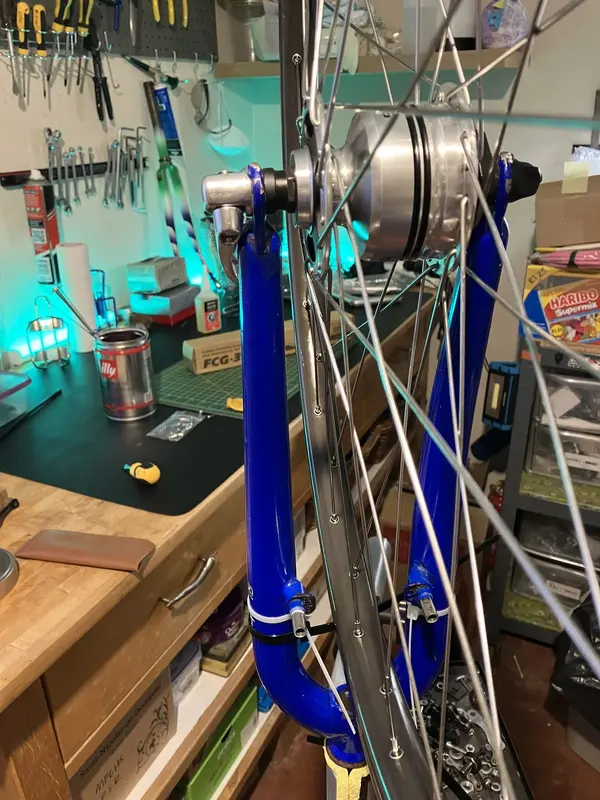doctor-bond
Feature Bike
Every now and then I build a wheel, but infrequently enough that it’s back to school each time. Am going to store some links here and ask a few questions from the collective wisdom which I know is on here.
Fave spoke calculator is EDD: Leonard EDD spoke calc
Fave tutorial is Sheldon: Sheldon’s Wheelbuild
So, this time I’m doing a 26” Dynamo front, 36 hole. It has quite high flanges equating to 255mm spokes for 3x.
Question: I’m assuming 3x, but are there any thoughts on doing something different for this set up? Lightness is not of consequence; strength, reliability, comfort is.
Oh and ACI butted are spokes of choice.
Fave spoke calculator is EDD: Leonard EDD spoke calc
Fave tutorial is Sheldon: Sheldon’s Wheelbuild
So, this time I’m doing a 26” Dynamo front, 36 hole. It has quite high flanges equating to 255mm spokes for 3x.
Question: I’m assuming 3x, but are there any thoughts on doing something different for this set up? Lightness is not of consequence; strength, reliability, comfort is.
Oh and ACI butted are spokes of choice.
